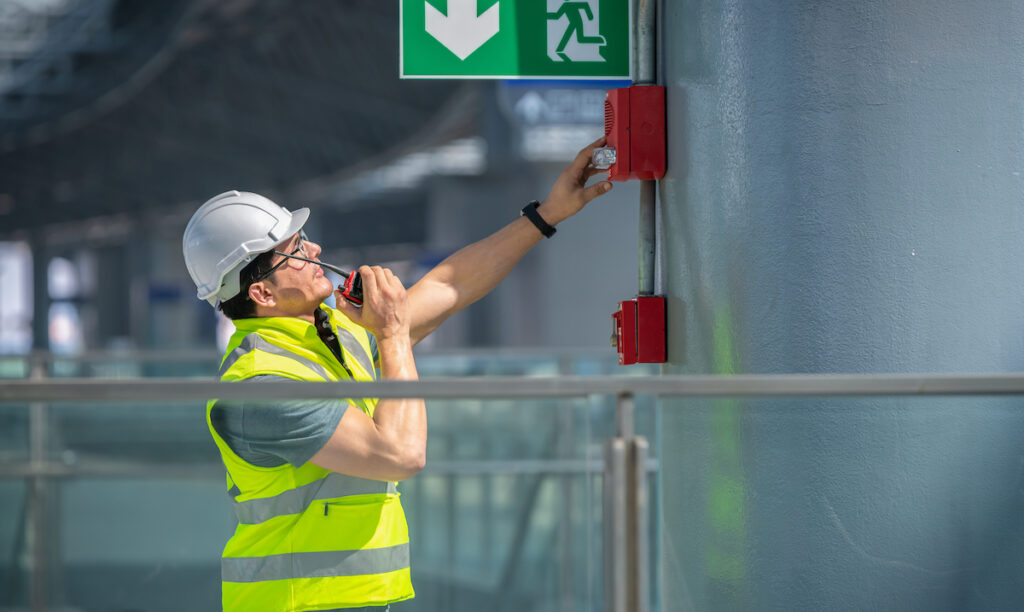The good news is that, for the last five years in the UK, fewer injuries are occurring from scaffolding accidents. 2017 represented an all-time low for injuries resulting from falls from scaffolds. However, this still means that there were 89 injuries from scaffolding use. That’s 89 injuries too many. The statistics for Ireland are harder to define, and the most recent available are from 2016, however there is a general downward trend over the years as well, which is good news.
These reductions in injury are, without a doubt, a positive development. However, there is still a long way to go in ensuring working with scaffolds is always safe. As such, working at height is one of the primary areas we’re concentrating on during our upcoming Safety Week, with Monday 22nd October being dedicated to this area of Health and Safety.
Working safely with scaffolds
A key piece of information, for those in the construction trade, is the code of practice produced by the Health and Safety Authority.
Fundamentally, before considering human behaviours, we need to consider the scaffold design itself. This is set out within the code of practice, but ensures such things as careful calculation of the design by a skilled and competent individual. They are trained to understand the elements of design which affect rigidity, stability and strength. This is a skilled task.
Attention needs to be given to the three stages of scaffold use: erection, duration and dismantling. Safety needs to be considered at each of these points independently. Furthermore, scaffolding should always be fit for its intended purpose, and never a ‘make do’ situation.
Ensuring that the scaffold itself is actually secure to work on is just the first hurdle. It is vital to remember that these are working platforms. They are only fit for purpose if construction workers can fully perform their tasks safely.
Workers using scaffolds
To minimise the risk of injury involving scaffolding, individual workers also need to be equipped with both the protective equipment they need, but also the knowledge to work on scaffolding safely.
Our top recommendations for working safely with scaffolds:
- Always get appropriate training before using a scaffold, and take responsibility for training those who work for you. This is a skilled task that requires a broad understanding of risk and hazards. Workers should be trained to understand crucial things such as load capacities.
- Always ensure a scaffold has undergone a safety check before mounting. A competent trained individual should check the entire scaffold regularly during the construction period.
- Always wear a hard hat both on the scaffold, and when working in its vicinity. This is particularly vital if you are working underneath the scaffold at any point. Small items dropped from height have the potential to cause big injuries.
- Always wear sturdy boots to ensure safe footing.
- Always use tool lanyards to keep tools safe and not at risk of causing a hazard.
- Always be aware of who else is on or near the scaffold with you.
- Always report any concerns to a supervisor.
- Always keep scaffolding boards clean and free from excessive mud.
- Always use the fixed ladders for accessing higher platforms.
- Never leave belongings or tools on a scaffold when they aren’t in use. This includes for breaks or changes in shift. They can be forgotten about and become trip hazards, or blow off in the wind.
- Never overload a scaffold.
- Never add additional height to a scaffold by using other items such as boxes or crates. If you cannot reach safely to perform the task, then the scaffold design is not adequate for intended use.
- Never use scaffolding that is icy, or slippery with mud. Over time, scaffolding boards become more prone to slipping in the wet. To minimise this, use newer scaffolding boards and ensure they are kept clean.
- Never mount a scaffold which has been tampered with, or left unattended, without a competent assessment of its safety.
- Never use a scaffold in high winds.
- Never use the scaffold in a way in which it wasn’t intended, for example climbing on the frame.
- Never climb the ladders with items in your hands. These should be attached via a tool lanyard, or lifted up the scaffold separately.
To learn more about working safely with scaffolding, click here



